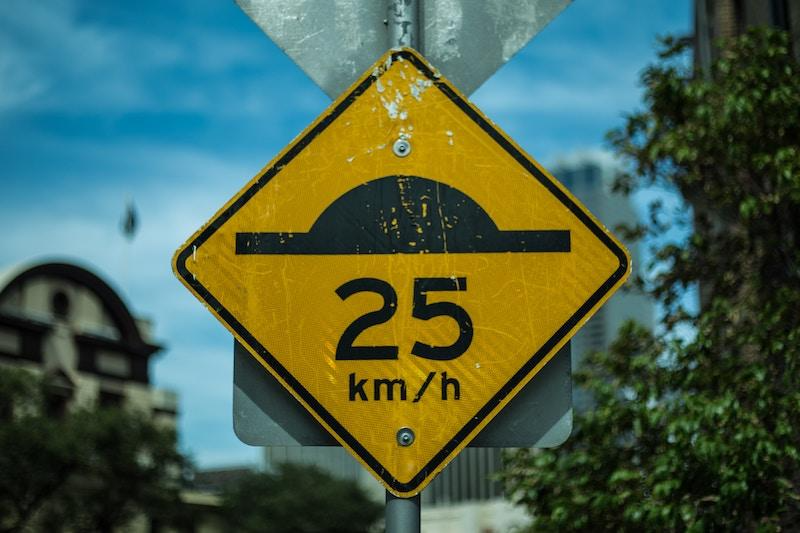#MemorableContent A text in which you can talk to its author, lightly argue with him, laugh at his jokes, or boil over with rage, will always be more interesting than shallow, transparent, sometimes even invisible texts. Linguistically and grammatically correct, following rules and patterns, such as Polish essays. Such as all the others. None. In the flurry of information, texts and messages, at a time when every creator on the web is fighting for readers’ attention, do something different. Don’t give them texts. Talk to them. I’m taking you on a journey to better, more interesting and captivating texts. Get on board! Let’s set out.
Gas_to_dech – verbs
. Verbs are words that turn up the pace. Thanks to them, the text glides, rushes, rushes forward, instead of, like the locomotive in Tuwim’s poem, “dragging sluggishly.” Verbs introduce dynamism. There is action, something is happening, there is power.
Verbs are words that turn up the pace. Thanks to them, the text glides, rushes, rushes forward, instead of, like the locomotive in Tuwim’s poem, “dragging sluggishly.” Verbs introduce dynamism. There is action, something is happening, there is power.
While in lifestyle or parenting texts such dynamics are simpler to apply, you’re probably wondering how to introduce them into commercial, SEO or e-commerce support texts. I’m running with help! How about a text on hammer and nails?
. .“The same thing happens every time! A beautiful picture, a picture frame and a composition that you have carefully designed. You take a nail in your hand. In the other you grab the hammer. You have measured, calculated and refined everything. You strike and… that nail bends again and the hammer also seems to malfunction.” And so it goes on…
. .See how many verbs there are here. There were as many as three in one sentence! This makes the text more vivid and vivid. One can almost identify with the person who is about to hammer the nail. One can feel her fatigue and frustration. The verbs with which you directly address the reader also work well. You know what I mean? You feel it already, don’t you?”
. .Well, we put the brakes on that – adjectives
.
You can’t just rush through, though, or the reader will run out of breath. Sometimes you have to put the brakes on. Adjectives are just such a brake. They allow you to relax. However, you need to remember that they should not be banal, simple and popular words, because the text will be transparent. Again, you need to draw the reader into your world.
. .This is where sensual epithets help especially. We have a sense of sight, hearing, smell and touch. Use them all in the texts you prepare. Sensual sentences will make the reader enter your text with his whole self. It will no longer be a transparent article.
. .Let it smell like bread when you write about bread, let it smell like grease, oil and gasoline when you write about cars. Let it be rough to the touch when you write about sanding wood. Let it scald the reader when you pull a hot pan off the stove. Draw pictures, but in such a way as to give the impression that you are participating in them. And after all, you don’t separate your eyes from your ears on a daily basis, and you don’t receive impressions with just one sense.
.City lights – sentence length
.
Another element regarding text speed. You have gas – a verb, brake – an adjective. But sometimes you have to alternate between acceleration and braking. Like at traffic lights. Verbs and adjectives alone won’t get it done. You need something more. It’s sentence length.
.Imagine that each of your sentences has the same number of words. You write equal, same and elaborate sentences every time. Your brain stops registering them, starts flowing, and then drifts.
.Count the words in each of the above three sentences :).
.And now look below.
.Imagine that each of your sentences is different. Some of them run, like a doe in a meadow in the morning, and others let you stop. They are shorter. They are simpler. They shatter uniformity, activate the brain, and constantly provide it with stimulation.
.Which version do you like better? The reader will probably choose that too 😉
. .
Dialogue – a fun travel companion
.
Have you ever ridden in a car or train compartment where no one spoke to anyone? Was it cool? Didn’t you feel like the trip was getting longer and seemed to go on forever? This is what happens when you don’t have a dialogue with the reader in your text. Talk to him, ask questions. Return to the memories of your reader. Just take into account that they must be memories that he or she probably actually has (like a trip in a silent compartment). Reply directly. Give a choice (which part of the text do you like better?), give an assignment (count the words in the sentences from the previous passage), entertain, say something not entirely true to slightly provoke the reader (I know, I know, you may not like it), to immediately give him a point afterwards. You’ll see how such dialogue will work for your entire text.
.Time to change, or metaphor
.
We are changing our car. We’re leaving our current mode of transportation to travel in a more colorful and imaginative bus. Why so? Because we are going to talk about metaphors. Metaphor is speaking not directly. The use of familiar words in juxtaposition and in relation to phenomena to which they do not normally apply.
.Decidedly, metaphors are too rarely used in web texts. Perhaps because it is not the simplest technique of expression. While some of them are established and are used automatically, the more interesting ones you have to create yourself. Be warned right away. The established ones will not keep the reader for long. They also make your text transparent. Only the ones you create yourself will attract attention and engage the reader in a conversation with you. Why? Because discovering the hidden meaning of metaphors is simply interesting, interesting, rewarding. Handing everything on a platter is boring.
.A metaphor for our journey together through various linguistic treatments and “tricks” that will engage the reader is a car trip. It’s more interesting that way.
.In these beautiful natural circumstances
.Another underestimate in webwriting – message. In Polish we have four participles. Here they are:
.- adjective:.
- active (running); .
- passive (written); .
- proverbial:.
- current (running); .
- previous (having run); .
A few words on the subject. The adjective participle allows you to form an adjective from a verb. From the imperfect (run), an active adjectival participle is formed, and from the perfect (write), a passive participle is formed.
. .
They further describe various phenomena, enrich the range of available vocabulary, and provide an opportunity to combine the dynamics derived from verbs with the calmness and subduedness of the adjective.
.Contemporary adverbial participle is also formed from an imperfect verb, while the antecedent is formed from an accomplished verb. The present tense allows for the expression of two actions that continue at the same time.
.Instead of: I was listening to music and writing an article, you can write: Listening to music, I was writing this article. It is more interesting, colorful and energetic, and the text reads better.
.The past participle allows you to establish the order of activities that took place in the past. Instead of writing, first I listened to music, and then I wrote the article. Having listened to an album by my favorite band, I took to writing the article.
. .When using adverbial participles, just remember the congruence of subjects: As I entered the office, the door slammed (it comes out that the door went into the office and slammed).
. .Apply participles with head and flair and your text will become more interesting, engaging and stylistically much richer. You will add to its appeal and help it flow briskly in the reader’s mind.
.Policy STOP, or exclamation points
.
No, it’s not about that (!) punctuation mark. It’s about something completely different. Oh, I forgot, this is explained after all. Exclamation marks are expressive (or, more precisely, lexical) ways of expressing emotions, feelings, sensations, experiences and impressions. With their help, you can show disgust (yuck), delight (oh, ah), dismay (oh), pain (ouch, ouch).
They’re not a punctuation mark. .
Use exclamation points in your texts. Not too many, but not too few either. Now, run over in your head your last three or four texts. How many exclamation points were there. And do you know how many emotions they allow you to express?”
. .Let’s go back to the text about the hammer, only we’ll change its ending. “(…) You have measured, calculated and refined everything. You strike and… AUA! A piercing pain paralyzes not only your finger, but also your hand, and you have the feeling that in a moment it will cover your entire hand”.
. . . .You see, I did not write that you hit your finger with this hammer. But you know this perfectly well, because a short “aua” took care of the matter.
. .
“I stroll through the park sometimes. I like it. The greenery, the smell of the trees, the lovely glow of the birds. You can forget yourself in it, get lost, sink. There is such tranquility that you feel like time has stood still. A sudden and unexpected splash, pulls you out of your solitude. You look under your feet. Phew! It was something eminently indigestible. This dog probably didn’t like it either.”
. .Do you feel slight disgust? Well, that’s what it is! Here’s the point. Exclamation marks make the emotion you want to convey actually give to your reader.
.Longer way – use periphrases
.
Sometimes, for beautiful views, it’s worth taking the longer road. The same is true of text. The longer road in this case is a periphrasis. It is a discussion of a phenomenon by means of a longer description.
.Such a colloquial example: a toilet can be called a place “to which the king walks”. Several words instead of one. Periphrasis is used to avoid repetition.
. .Sometimes, however, the use of a complex description instead of a simple, one- or two-word name is simply more colorful and introduces more detail into the text, allowing you to visualize what is being referred to. Moreover – an obvious name is also “transparent”. It carries no charge beyond information. It does not affect the senses or emotions. With the help of a periphrase, one can stimulate both.
.We’ve already been here, or repetitions
.
The previous piece was about how to avoid repetition, and now I’ll contradict myself a little. Repetitions can be good and are not always a mistake. They must be used correctly, of course, so that it is clear that they were introduced on purpose and not by mistake.
.Words in one sentence should not be repeated. This is a mistake. However, if you start individual paragraphs with the same phrase or end them with the same phrase, you will create a kind of bracket. This will be an opening or closing bracket. It looks interesting, ties up the text and makes the whole integrated and coherent. Such repetition is not a mistake. It brings order, order and harmony to the text.
. .What are we going to do,
.
We are left with a summary. All the above tips are just clues. Apply them yourself, freely, and test the effects they will have. In this way, you will work out your own most effective ways to draw the reader into the dialogue. You will engage him, stimulate his senses and guide him through the text in such a way that this reader will not be “dragged” by you, but will follow you with energy, and this is a much better option. Good luck!
 Dorota Bajczyk
Dorota Bajczyk